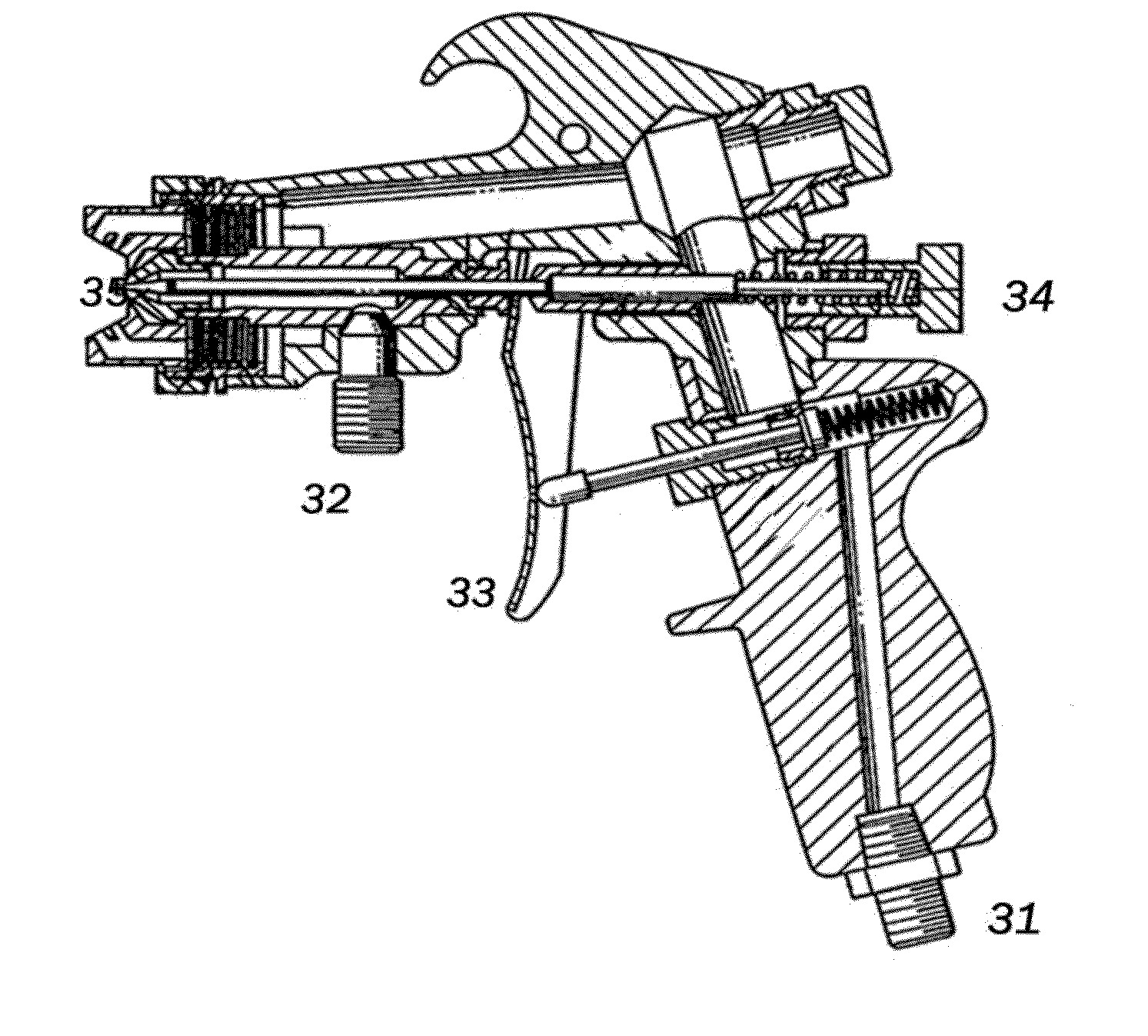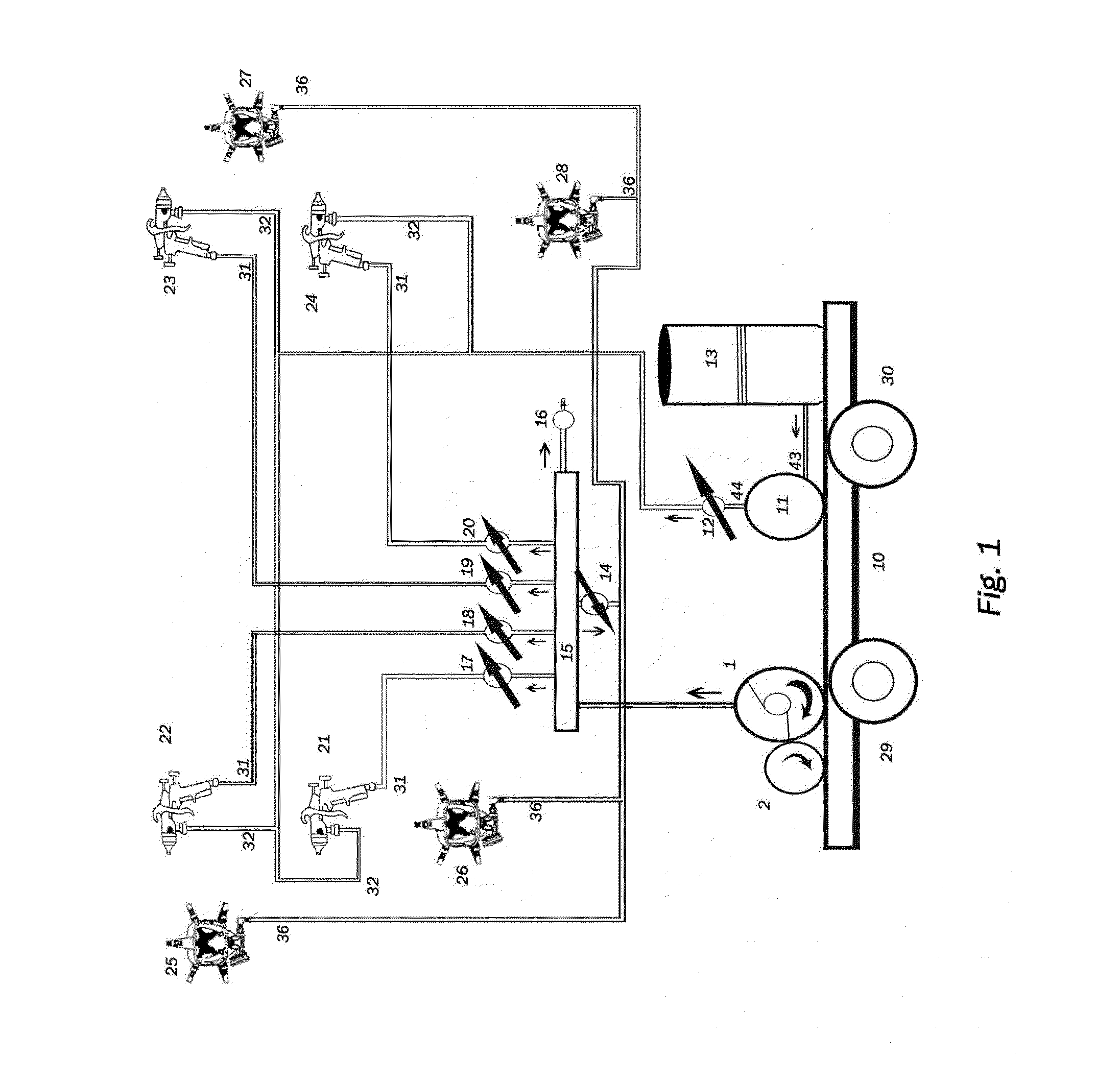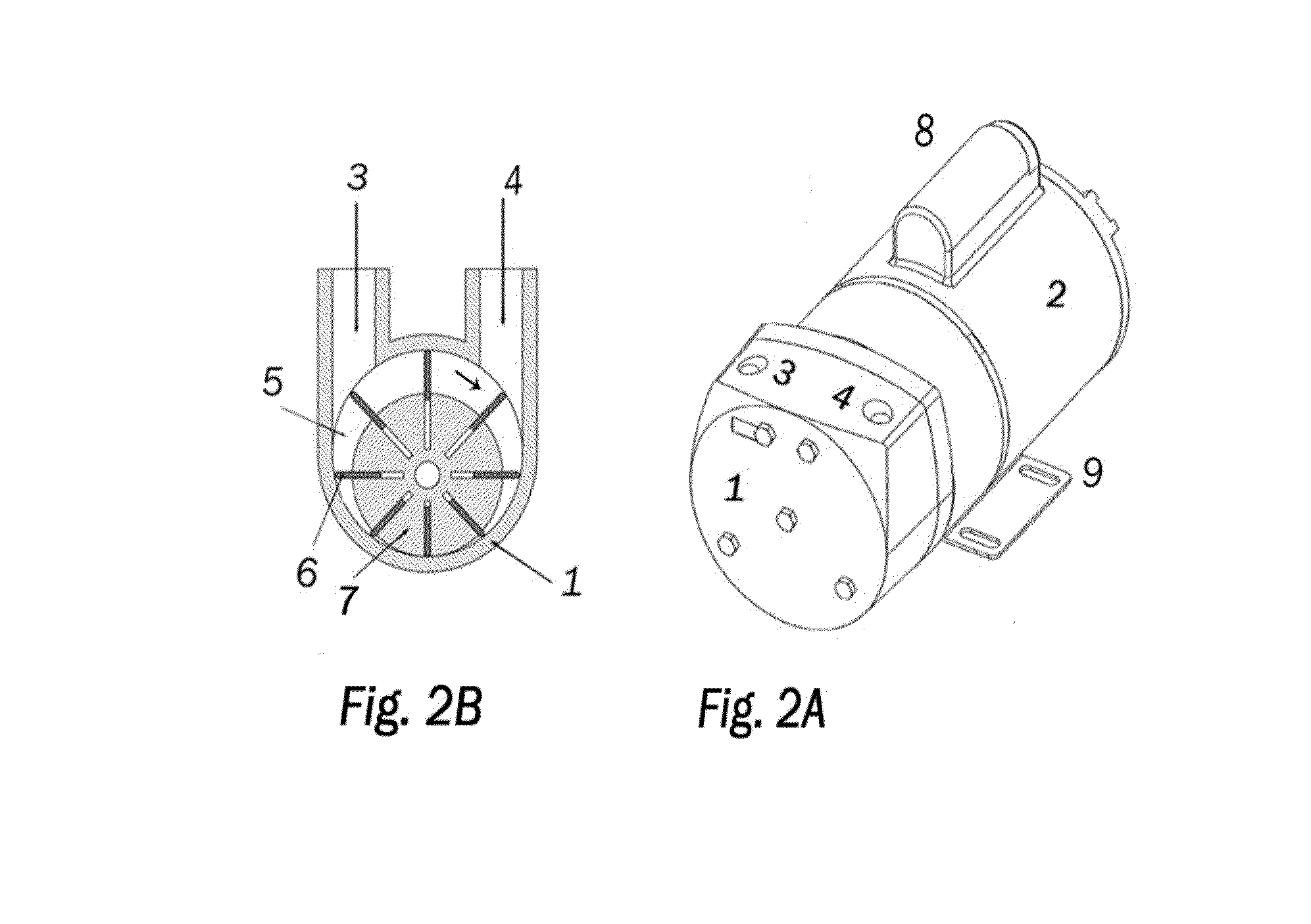Multiple Station HVLP Spray Coating System Utilizing a Rotary Vane Pump and Manifold Design with a Control System Function
a control system and spray coating technology, applied in the direction of liquid transfer devices, machines/engines, liquid fuel engines, etc., can solve the problems of high coating cost, inability to use air they pumps for atomizing coatings or fresh air breathing without adding costly filters and regular maintenance, heat and inefficiency, etc., to increase the number of spray stations, increase the speed and coverage of the delivery, and improve the effect of cost efficiency
- Summary
- Abstract
- Description
- Claims
- Application Information
AI Technical Summary
Benefits of technology
Problems solved by technology
Method used
Image
Examples
Embodiment Construction
[0018]One preferred embodiment of the present invention is shown in FIG. 1. The center of the design is the rotary vane pump 1, powered by an electric motor 2 that provides air to the manifold 15. The manifold is the center of the present invention where air from above source is distributed to both the HVLP spray guns, 21, 22, 23 and 24, along with the fresh air operator breathing apparatus 25, 26, 27. 28. Air to each of the four spray guns is individually regulated by regulators 17, 18, 19, and 20 and connect at each of the four guns at 31, the air input side of the spray guns. Individual air regulators allow losses in each line to be different due to hose length, type of gun, atomization rate, etc where each regulator can be adjusted to compensate. Air pressure regulator 14 regulates manifold pressure to each of the fresh air operator breathing apparatuses sourced at 36 and each breathing mask has its own adjustment, item 37 of FIG. 4. The gun air regulators will adjust the air wi...
PUM
 Login to View More
Login to View More Abstract
Description
Claims
Application Information
 Login to View More
Login to View More - R&D
- Intellectual Property
- Life Sciences
- Materials
- Tech Scout
- Unparalleled Data Quality
- Higher Quality Content
- 60% Fewer Hallucinations
Browse by: Latest US Patents, China's latest patents, Technical Efficacy Thesaurus, Application Domain, Technology Topic, Popular Technical Reports.
© 2025 PatSnap. All rights reserved.Legal|Privacy policy|Modern Slavery Act Transparency Statement|Sitemap|About US| Contact US: help@patsnap.com



